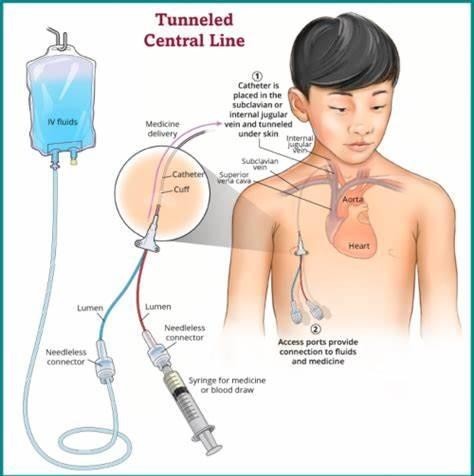Several nurses who work on a postoperative surgical unit have reported to the charge nurse their concerns about a particular surgeon's treatment of clients during invasive procedures.
Adult clients are often in tears after this particular physician performs central IV line insertions or other invasive procedures. After the charge nurse confronts the healthcare provider who dismisses the concerns, the charge nurse reports the surgeon's behavior to the nurse manager who listens but does nothing about the situation.
What action is most important for the charge nurse to take?
Confront the nurse manager as a group and ask why nothing has been done to change the surgeon's behavior.
Attend procedures performed by the surgeon and demand halting the procedure if the client becomes distressed.
Document client reactions to invasive procedures performed by the physician in their medical record.
Report the physician's lack of concern for clients' pain during invasive procedures to the Director of Nursing.
The Correct Answer is D
Choice A reason: Confronting the nurse manager as a group may not be effective or appropriate, as it may create more conflict and resentment. The charge nurse should follow the chain of command and escalate the issue to a higher authority if the nurse manager fails to act.
Choice B reason: Attending procedures performed by the surgeon and demanding halting of the procedure if the client becomes distressed may be seen as insubordination and interference by the surgeon, who may have legal authority to perform the procedure. It may also jeopardize the client's safety and outcome.
Choice C reason: Documenting client reactions to invasive procedures performed by the physician in their medical record is important, but not sufficient. It does not address the root cause of the problem, which is the surgeon's lack of empathy and respect for clients' pain and dignity.
Choice D reason: Reporting the physician's lack of concern for clients' pain during invasive procedures to the Director of Nursing is the most important action for the charge nurse to take, as it may lead to an investigation and corrective measures. The Director of Nursing has more power and responsibility than the nurse manager to deal with such issues and protect clients' rights and welfare.

Nursing Test Bank
Naxlex Comprehensive Predictor Exams
Related Questions
Correct Answer is B
Explanation
Choice A Reason: This is not the first priority because it is not a life-threatening condition. The male adolescent may have gastroenteritis or food poisoning, which can cause dehydration and electrolyte imbalance. The nurse should monitor his vital signs and fluid intake, but he can wait for further assessment.
Choice B Reason: This is the first priority because it is a potential surgical emergency. The female client may have appendicitis, which can cause peritonitis and sepsis if left untreated. The nurse should assess her pain level, vital signs, and abdominal signs, and prepare her for diagnostic tests and possible surgery.
Choice C Reason: This is not the first priority because it is a chronic condition that does not require immediate intervention. The elderly client may have intermittent claudication, which is a symptom of peripheral arterial disease. The nurse should educate him on leg care and exercise, but he can wait for further assessment.
Choice D Reason: This is not the first priority because it is a common condition that can be treated with antibiotics. The child may have a bacterial infection, such as bronchitis or pneumonia, which can cause productive cough and fever. The nurse should auscultate his lungs and check his temperature, but he can wait for further assessment.
Correct Answer is A
Explanation
Choice A Reason: This is the best action because it prevents the spread of infection to other clients and staff. Mumps is a viral infection that causes inflammation of the salivary glands and can be transmitted by respiratory droplets. The nurse should place an isolation cart outside of the room and wear a mask, gloves, and gown when entering.
Choice B Reason: This is not the first priority because it does not address the risk of infection. The nurse should schedule bedside play time with the occupational therapist to promote the child's development and coping, but this can be done later.
Choice C Reason: This is not the first priority because it does not ensure that infection control measures are in place. The nurse should instruct the child's parents about the need for transmission precautions and educate them on how to care for their child at home, but this can be done later.
Choice D Reason: This is not the first priority because it does not prevent the spread of infection. The nurse should assign the child to a room close to the nurse's station to monitor his condition and provide comfort, but this is not a critical intervention.
Whether you are a student looking to ace your exams or a practicing nurse seeking to enhance your expertise , our nursing education contents will empower you with the confidence and competence to make a difference in the lives of patients and become a respected leader in the healthcare field.
Visit Naxlex, invest in your future and unlock endless possibilities with our unparalleled nursing education contents today
Report Wrong Answer on the Current Question
Do you disagree with the answer? If yes, what is your expected answer? Explain.
Kindly be descriptive with the issue you are facing.
